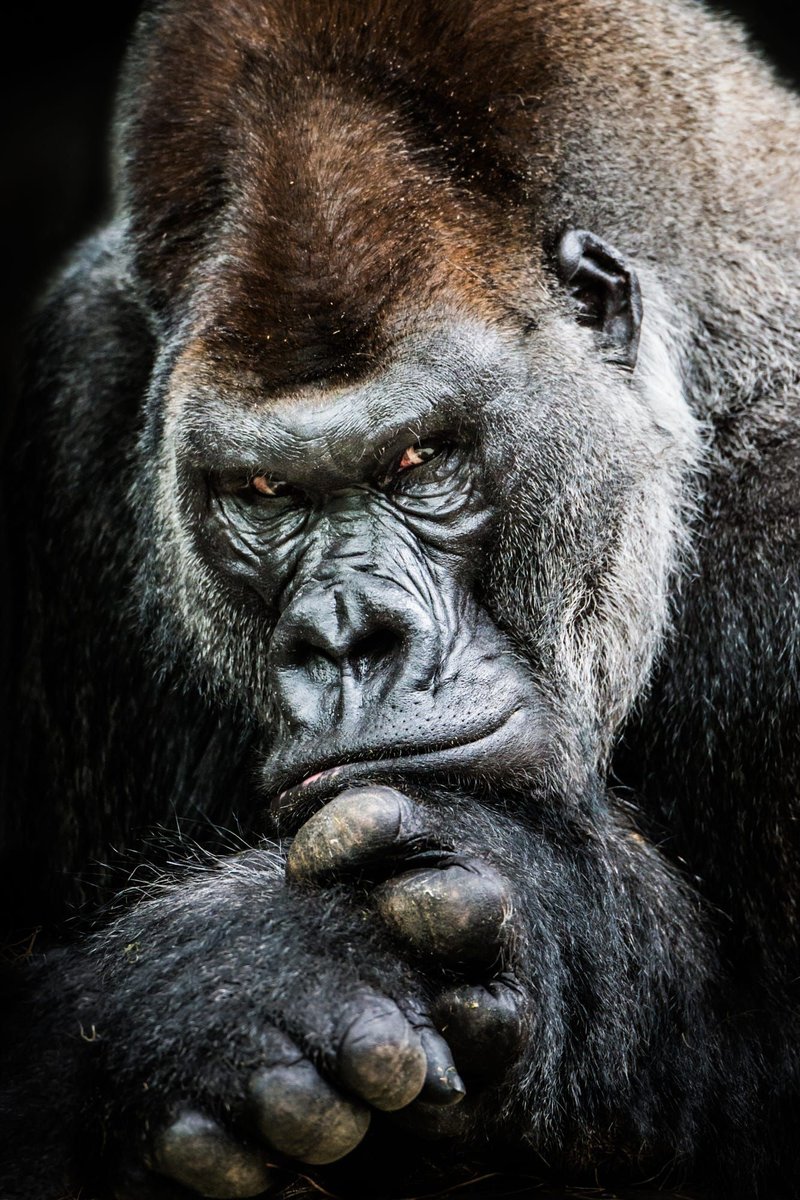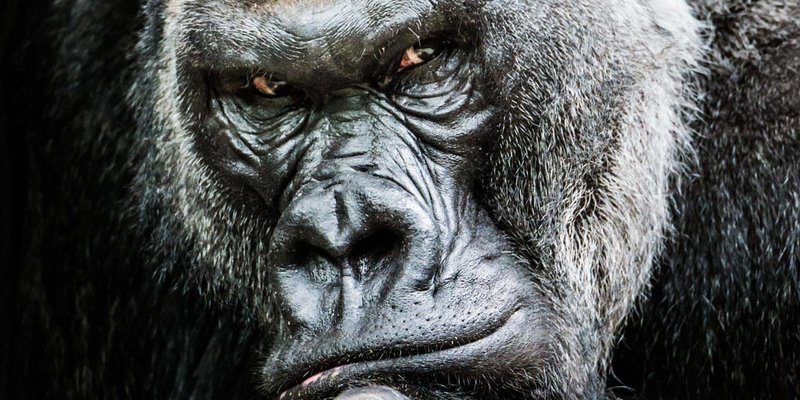
In this article, we’re diving into the most common myths surrounding the Western Gorilla. Think of it as a friendly guide to understanding these animals better while debunking the tales that can lead to misunderstanding. By the end, you’ll not only have a clearer picture of the Western Gorilla but also appreciate the complexities of their lives.
Myth 1: Gorillas Are Aggressive and Dangerous
One of the biggest misconceptions about Western Gorillas is that they are aggressive and pose a danger to humans. Honestly, this myth probably stems from Hollywood movies where gorillas are portrayed as fierce monsters ready to attack. In reality, Western Gorillas are generally peaceful creatures. Their natural instinct is to avoid confrontation.
Western Gorillas are herbivores, meaning their diet consists mainly of leaves, stems, and fruits. This peaceful diet aligns with their calm temperament. In the wild, you’ll rarely see them displaying aggressive behavior unless they feel threatened. Most of the time, they prefer to socialize with their troop and care for their young. Their behavior is more about forming strong social bonds than engaging in battles.
Moreover, gorillas have rich communication skills. They use various vocalizations, facial expressions, and body language to express their emotions and intentions. Instead of being out for a fight, they often demonstrate affection toward each other through gentle gestures, like hugging or grooming. This care isn’t just about maintaining cleanliness; it strengthens their relationships within the group.
Myth 2: Gorillas Are Primitive
Another popular myth about the Western Gorilla is that they are primitive animals, stuck in their ways. This idea might lead one to think of them as simple-minded creatures. But here’s the thing: gorillas are incredibly smart.
Research has shown that Western Gorillas exhibit advanced problem-solving skills and even display signs of self-awareness. For example, they can use tools to access food, like sticks to extract termites from mounds. They also engage in play, which is crucial for both their mental and social development. It’s much like how young children learn through play—gorillas use it to explore their environment and practice essential skills.
Additionally, gorillas have distinct personalities. Some may be shy, while others are more outgoing and curious. Just like humans, their personalities influence their social dynamics and interactions within their troops. Observing these behaviors reveals a level of complexity and intelligence that extends beyond mere survival.
Myth 3: Western Gorillas Live Solitary Lives
You might be wondering about gorilla social structures. It’s a common misconception that they live alone, much like some big cats do. In reality, Western Gorillas are highly social animals. They form troops—groups that typically consist of one dominant male (known as a silverback), several females, and their offspring.
Troops offer protection and stability. The silverback plays a vital role in maintaining group harmony and safety. He is responsible for making decisions for the troop, guiding them to food sources, and defending them from potential threats. The bonds between troop members are strong, and they support each other emotionally and physically.
Interestingly, these social structures can change. Males may leave their natal group once they reach maturity to find or form new troops. This behavior promotes genetic diversity within the species and helps prevent inbreeding. Overall, being part of a troop is essential for a Western Gorilla’s well-being, providing companionship and support throughout their lives.
Myth 4: Western Gorillas Are Endangered Because of Overpopulation
Some might think that the Western Gorilla’s endangered status is due to overpopulation, similar to how some species face issues in crowded habitats. However, the reality is quite the opposite. Western Gorillas are critically endangered, primarily due to habitat loss, poaching, and disease.
Deforestation poses a significant threat to their survival. The expansion of agriculture and logging operations continues to encroach on their natural habitats, reducing the range where they can live and find food. This loss forces them into smaller areas, increasing competition for resources.
Additionally, poaching is a serious issue. Gorillas are hunted for bushmeat or captured for the illegal pet trade. Just as troubling, diseases like the Ebola virus can decimate gorilla populations. Conservation efforts are crucial to protect these magnificent creatures and the ecosystems they inhabit. Supporting organizations that work toward gorilla conservation can make a real difference.
Myth 5: Gorillas Are Just Like Humans
You might hear that gorillas are nearly identical to humans because of our shared DNA. While it’s true that Western Gorillas share about 98% of our DNA, that doesn’t mean they are just like us. You’ve got to consider the whole picture.
Sure, we can relate to them on some levels, like their social structures and emotional expressions. However, they have evolved to thrive in their own environments, facing different challenges than humans do. For instance, while humans utilize technology, gorillas have developed skills suited to their natural habitats.
Moreover, their ways of life are adapted to the forests of West and Central Africa. Their movements, foraging habits, and family structures are unique to their species. Appreciating their differences helps us understand how diverse life on Earth can be.
Myth 6: All Gorillas Are the Same
While it’s easy to group all gorillas under the same umbrella, they consist of two main species: the Eastern Gorilla and the Western Gorilla. Each of these has unique characteristics and behaviors. Let’s focus on the Western Gorilla, which is further divided into two subspecies: the Western Lowland Gorilla and the Cross River Gorilla.
The Western Lowland Gorilla is the more common subspecies, often found in the lowland forests of Central Africa. They are generally smaller and have a more varied diet compared to their Eastern counterparts. The Cross River Gorilla, on the other hand, is one of the most endangered primates in the world, with fewer than 300 individuals left in the wild.
Understanding these differences not only highlights the uniqueness of each species but also emphasizes the need for targeted conservation efforts. Each gorilla type plays a role in its ecosystem, maintaining the balance of its environment.
The Importance of Debunking Myths
Understanding the truth about Western Gorillas is crucial for their conservation. Myths can lead to misunderstandings, making it harder to garner support for the protection of these animals. Education is key! By spreading accurate information, we can help protect gorillas and their habitats.
Consider becoming an advocate for gorilla conservation in your community. Share what you’ve learned, support wildlife organizations, or even visit sanctuaries that care for these creatures. Every little bit helps in ensuring that Western Gorillas thrive for generations to come.
In conclusion, Western Gorillas are not just misunderstood; they’re remarkable beings deserving of our respect and protection. By acknowledging and correcting these common myths, we can contribute to a brighter future for these gentle giants and help preserve the rich biodiversity that our planet offers. Let’s celebrate and protect the incredible world of the Western Gorilla together!

